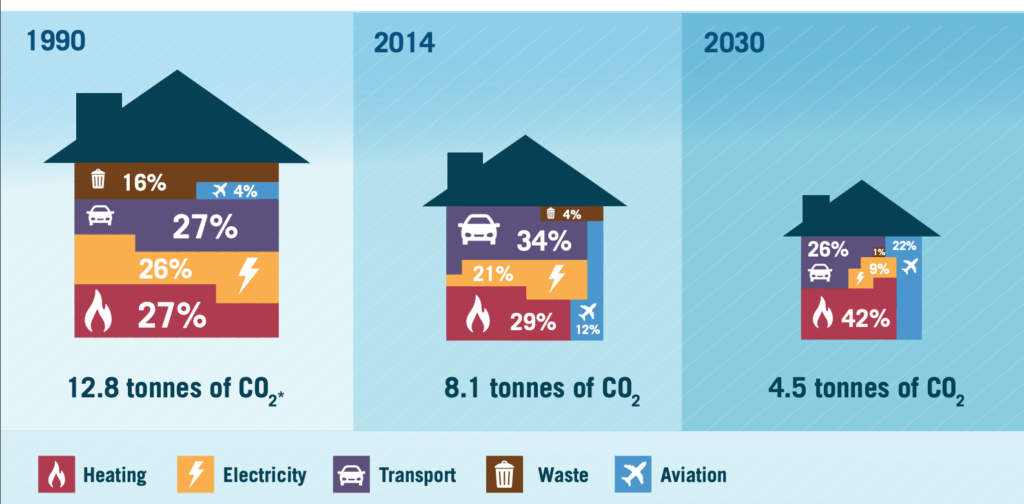The drive for eco-friendly homes is becoming more prevalent. As we further progress towards creating a greener, more sustainable future, homes and the way we heat and design them is coming under greater scrutiny, and for very good reason. It’s been reported that around 40% of the UK’s emissions come from domestic households, with less efficient older properties being the main offenders.
The CO2 reduction journey from 1990 to 2030 – Produced by The Committee on Climate Change:

Make Your Home Eco Friendly.
There is new legislation coming into effect to help reduce the carbon footprint of homes. All new stoves sold in the UK need to be Ecodesign Ready from 1st January 2022. By 2025, all gas boilers will need to be hydrogen ready – as eventually, the complete gas network will be hydrogen only. Tests and trials with hydrogen as the main “on-grid” heating source are growing at a fast rate, as the UK opens the path for creating the necessary infrastructure to allow for a hydrogen-fueled future.
Popular Tips:
Setting Your Room Temperatures:
Make sure you understand your heating controls and set them to only heat the rooms you need, when you need them, and not above the required temperature. Investing in a room thermostat and thermostatic radiator valves could save you £75 a year, and reduce your carbon emissions by 320kg.
Insulate Hot-Water Pipes:
Insulating exposed hot water pipes and also your hot water cylinder (if you have one) is a quick win. According to the Energy Saving Trust, around 33% of heat in an insulated home is lost through the walls. Installing solid-wall insulation could save a gas-heated semi-detached home around 930kg of carbon dioxide emission a year.
Heater Pump Switch:
25% of homes currently using oil heating, and 33% of homes using electric heating could switch to a heat pump, saving a huge 3.2 tonnes of CO2 per year and 0.8 tonnes of CO2 per year respectively.
Managing Waste:
By reducing and sorting waste, emissions from the average home could fall by 0.25 tonnes of CO2 per year.
Seal your windows and doors and other gaps:
You could go all out and fit double glazing if you don’t have it already. A real cost-effective, quick win here, is to look for any gaps and drafts in windows and doors and anywhere else, and seal. It’s a small thing but small things all add up.
Switch to energy-efficient bulb:
Have a supply of high-efficiency bulbs. So when you need to replace your old bulbs, you’re slowly driving down your energy costs, and helping the environment. High energy bulbs are not only more efficient, but they will also last longer too. An average home could save up to 65kg of CO2 a year by making the switch.
Swap your desktop for a laptop:
When it’s time to update your computer, choosing a laptop over a desktop computer could save up to £20 and 35kg of CO2 every year. Turning off your computer equipment at the plug, instead of leaving it on standby could save a typical home around £6 and 20kg of CO2 every year.
Whatever you decide to do all changes make a difference. As regards hydrogen to replace natural gas in the national grid, this will take time to become fully integrated into the UK’s heating network. However, hydrogen is a fuel, which could transform the way we heat our homes, and be a huge driver in lowering emissions and help the UK reach its 2050 net-zero emission goals. More information can be found at https://www.hy4heat.info/